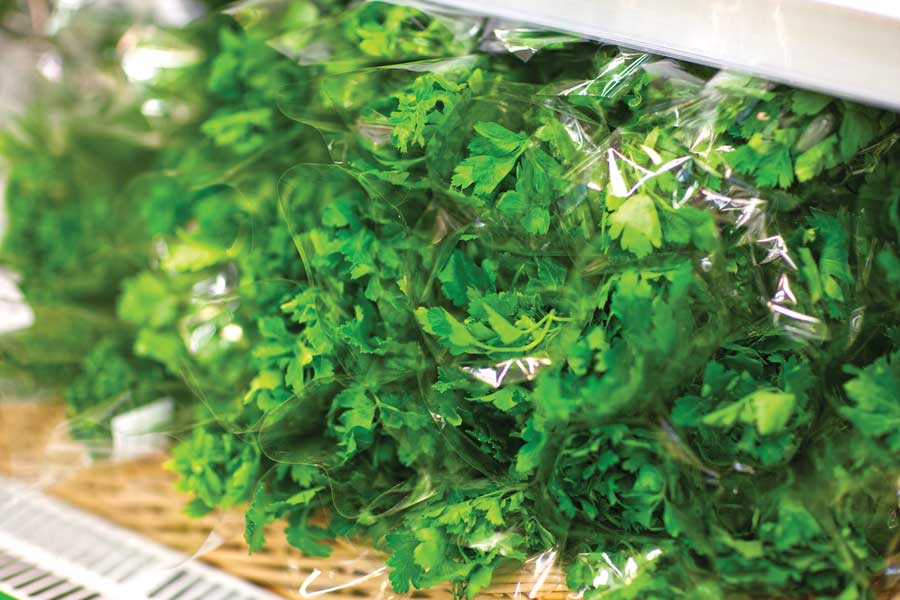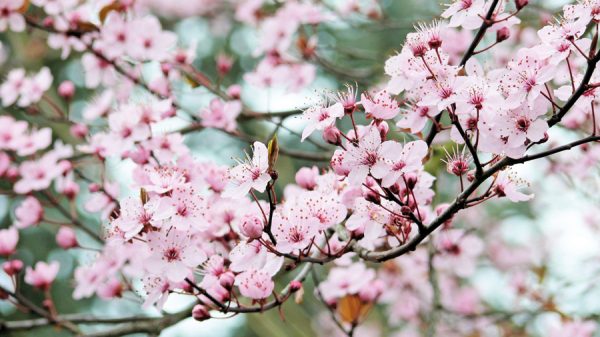The exhuberant colour and warm summer evenings are firmly behind us, its time to seek out the joys of autumn. Although the temperature is dropping and the nights are drawing in, plants have a way of softening the transition but presenting themselves as a warm glow of russet and fiery tones as they prepare for their winter rest. Its a time of year when we can start taking it a little easier, no frantic weeding or constant mowing, more a gentle tidying up, moving things around and completing those repair jobs that have been niggling throughout the summer months. Even though the garden takes on a more relaxed feel it still provides an escape from the stresses of everyday life. I often find myself wandering around the garden just inspecting what is going on, taking in the fresh air and appreciating the architecure of plants without their leaves.
Herbs are one of those groups of plants that I always find interesting, their colour, scent and texture make them great gap fillers also providing the bonus of flowers and leaves you can use in the kitchen. Many will easily establish be quite happy growing away in the garden although some are inclined to wander a little. I still grow mint form my Grandma’s garden, who gave a cutting to my Mum, who gave a cutting to me. I am sure if left to its own devices it could concevably have found its way from my Grandma’s to my garden without assistance.
Some herbs like Oregano and Thyme, if left become a tangled mat of thin woody stems, appearing to die out in the centre of the plant. Its a good idea to lift and divide these every two to three years, separating small fist sized clumps of growth from around the edge of the plant and either pot or replant, discard the woody centre as this will be exhausted and of little use. Herbs like Sage and Rosemary are best propagated from cuttings which can be taken now and placed in a windowsil propagator they wil root in three to four weeks. Pot them into individual pots of good quality compost and keep in a sheltered place ideally a cold frame or unheated greenhouse. They will develop a strong root system through the winter months and burst into growth next spring.

Herbs such as Basil, Dill and Coriander are annuals therefore difficult to keep cropping over winter and are best purchased as fresh herbs or plants from the supermarket. You can sow or purchasing plants from the nursery or garden centre next spring.
If you purchased tender perennials for your garden this summer and are wondering how to keep them through the winter then here’s what to do. Plants such as Pelargonium, Marguerite (Argyranthemum), Canna, Abutilon and Coleus (Solenostemon) will not generally survive in the garden over the winter months and will need protection from the cold and frost.
The best practice is to lift and containerise, placing them in a frost free place, in most cases a greenhouse with bubble insulation will provide adequate protection for most tender perennials, a conservatory or garden room will be fine too. Carefully lift the plants using a garden fork rather than a spade, this minimised the damage to the root system. Shake off any loose soil and pot into a container that will give 5cm (2 inches) space around the rootball filling this gap with potting compost. Firm gently and water. You shouldn’t need to water again until next spring although if it really dries out it may need watering around February time. As the weather improves next spring growth should start and you will need to increase watering, planting out only when ther is no risk of frost.
Although mowing the lawn has almost stopped there may be occasions and particularly if we have mild autumn and winter that the grass will keep growing. I have cut our grass during a mild spell in November setting the mower blades to the highest cut will avoid the lawn turning into a jungle. However avoid cutting if there is a risk of frost or snow. Autumn is traditionally the time for repair and aeration, releiving compaction from heavy use during summer. Whilst many modern mowers have grass collection the fact that the blades spin round under a canopy (rather that a cylinder that cuts and throws the grass into a grassbox mounted on the front of the mower), inevitably some clippings will fall onto the grass working their way into the surface resulting in a springy feel to the lawn. This ‘Thatch’ is best removed to improve air flow and reduce the risk of fungal diseases. On a small scale this can be done with a wire rake but for larger lawns you can hire a mechanical scarifier making the job much easier. Any arisings can be put on the compost heap just as you would with grass clippings. For heavily compacted areas a fork inserted into the turf to a depth of 10cm (4 inches) every 15cm (6 inches) will releive compaction and improve drainage.
Happy Gardening
Next Month, Revitalising Rhubarb, Winter berried shrubs and Put up a bird box.
Top Tip –
Time For Tea Or Coffee
Tea at my Grandma’s used to involve placing a couple of teaspoons of loose tea in a teapot, pouring on hot water and waiting a little while for the tea to brew, then pouring the tea through a tea strainer into the cup before adding milk, (or is it milk before Tea)? Inevitably there would be some liquid left in the pot and an accumulation of soggy tea-leaves, the cooled liquid was often used to water the houseplants but depending on the amount of tea drunk in the day, most would go straight onto the compost heap.

Although our tea consumption has changed with the introduction of fruit and green teas as well as teabags for traditional blends the residue from what is said to be ‘the nations favourite drink’ can still be used in the garden.
Many of the suppliers of tea in bags use biodegradable material which meant they can go straight onto the compost heap, but how many of you pour the liquid contents down the sink? This rich liquor when cooled is perfect for use in the garden, either watering around plants or pouring directly onto the compost heap. Small amounts can be collected in a bucket near to the back door and subsequently used in the garden when full.
There has been little research on just how beneficial or how much nutrition is provided but given that the product used is organic and will decompose the very least is that it will ultimately help improve the structure of your soil, and reduce the waste going to landfill. The liquid remains of tea will never replace the need for supplementary feeding but will at the very least help micro-organisms in the soil.
On a cautionary note, tea with milk and sugar could be a problem in potted plants and directly around plants in the garden. The milk especially could encourage moulds and fungi which can produce an unpleasant smell and therefore are probably best poured down the drain.
With regards to coffee grounds, the current advice is that they are fine to add to the compost heap and indeed provide added organic matter assisting worms and other soil organisms in breaking down organic matter. As to whether they deter slugs, ants or other garden pests the research is inconclusive. Apparently slugs may be slightly deterred by a layer of coffee grounds but the lure of fresh tasty leaves will not stop them heading for your favourite hosta.
In conclusion, both tea-bags and coffee grounds are a great addition to the compost heap providing organic matter to improve soil, they are best mixed with other organic materials such as kitchen waste, grass clippings and garden waste, rather than being used as a mulch or a thick layer around garden plants.







